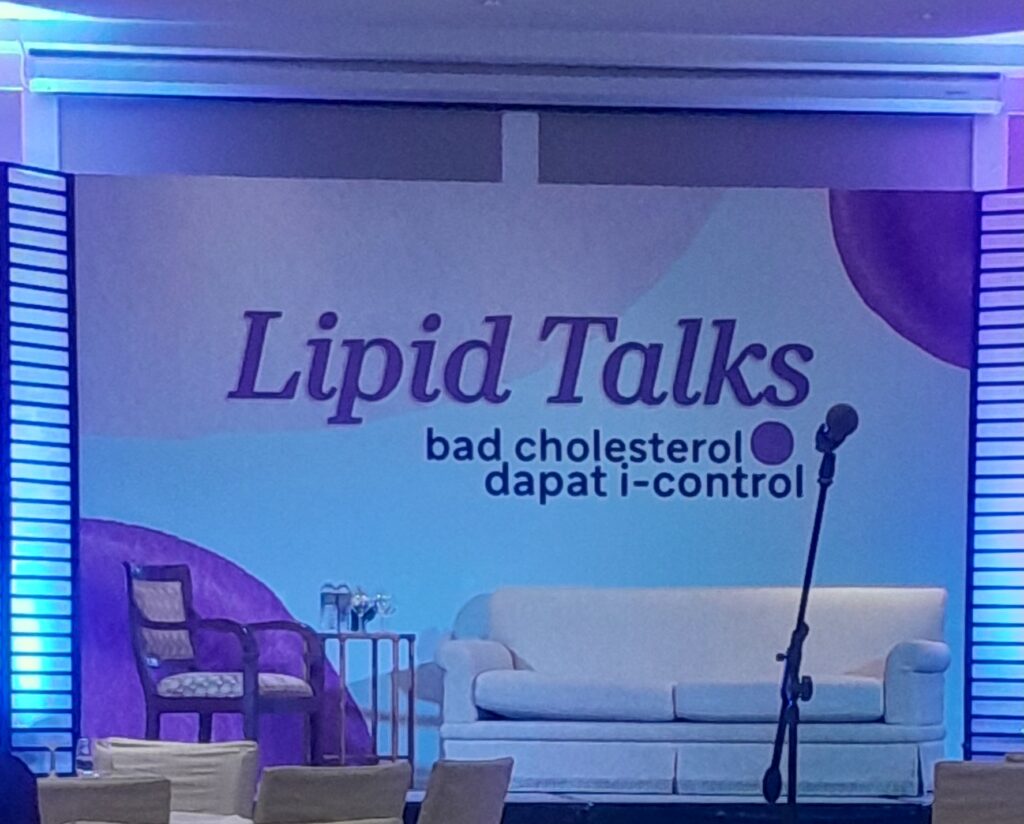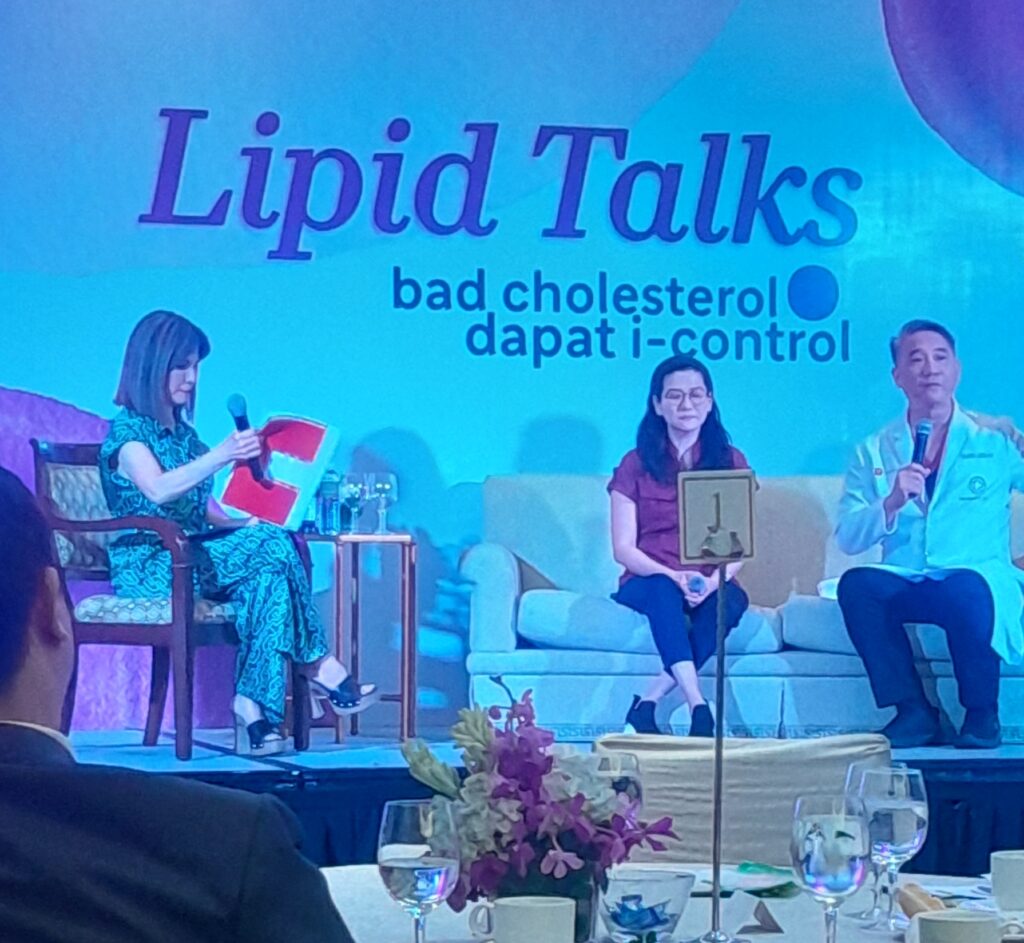Dyslipidemia, a condition characterized by excessive bad cholesterol in the body, is emerging as a significant health risk in the Philippines, a nation grappling with one 1 of the highest prevalence rates of adults with elevated bad cholesterol levels in Southeast es Asia. Data reveals that 47.2% of Filipino adults exhibit borderline to high total cholesterol levels, while an equally concerning 47.5% show borderline to high levels of bad cholesterol. This escalating prevalence underscores the urgent need for heightened awareness and effective management of the disease.

Driven by their shared commitment to uphold the health and wellbeing of Filipinos, Sanofi Philippines and A.Menarini Philippines organized a disease management awareness event titled : “Lipid Talks: Bad Cholesterol, Dapat I-control”‘ which showcased esteemed health experts who shared practical disease management information and advice for patients with dyslipidemia.
Dr. Mia Fojas, endocrinologist, explained that cholesterol is a naturally occurring substance in go the body, and travels through the bloodstream as lipoproteins?. “Two main types of lipoprotein are high-density lipoprotein (HDL) or ‘good cholesterol’ and low-density lipoprotein (LDL) or bad cholesterol’, Too much of the latter in the body is concerning as it can pose serious health risks.*”

Dr. Jude Erric Cinco, cardiologist-intensivist and professor, highlighted the effects of uncontrolled levels of bad cholesterol to a person’s cardiovascular functions: “Elevated levels of bad cholesterol can clog the arteries and result in severe complications like stroke and heart attack’, both of which are among the top killers in the country.
Anyone can increase their risk of unhealthy cholesterol levels if they have poor diet, are obese, do not exercise, smoke, or drink too much alcohol. Although dyslipidemia is more common in people over 40 years of age, even children can have it. Additionally, the disease does not have any symptom, making it difficult to diagnose. “The only way to know if you have unhealthy levels of bad cholesterol is by getting a blood test,” Dr. Fojas said. “And it is important that Filipinos regularly speak with their doctor so they can better understand how to prevent and manage it.” While eating healthy food and exercising are highly recommended in managing the disease, often dyslipidemia can’t be treated with lifestyle changes alone. A doctor may prescribe medication to control the patient’s bad cholesterol levels *’.

Dr. Cinco added, “Talk to your doctor so he can help you achieve your target cholesterol level based on your risk category. Your doctor is the best person to recommend an updated and personalized treatment pian that best suits your condition.”




